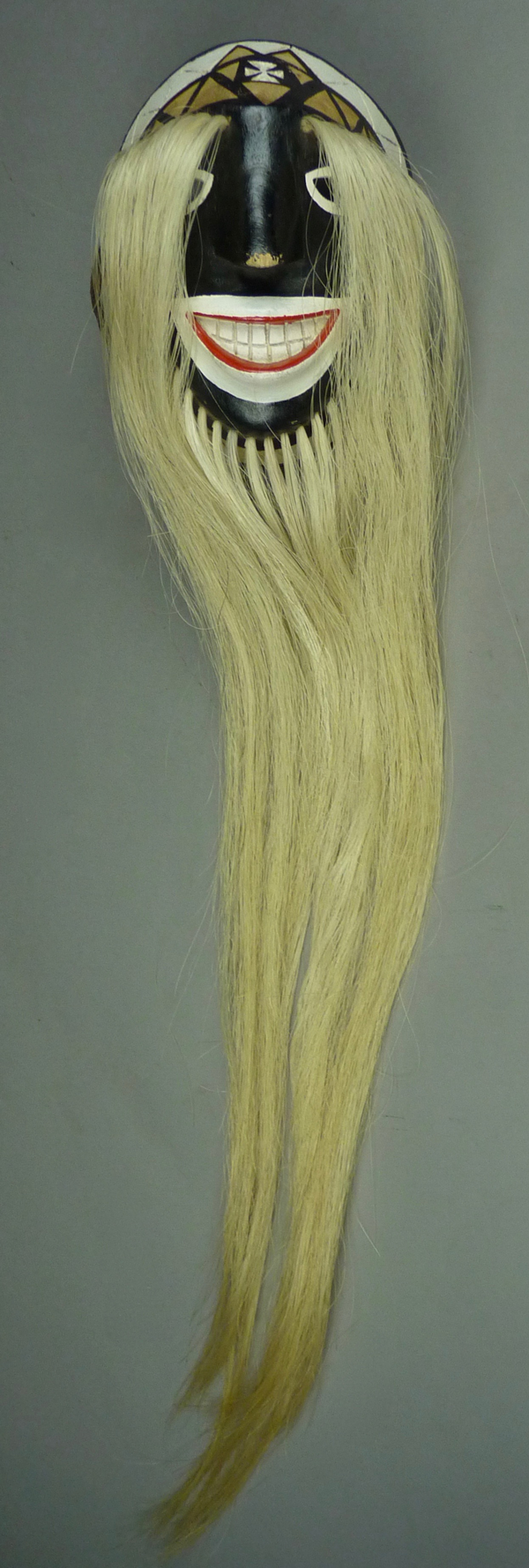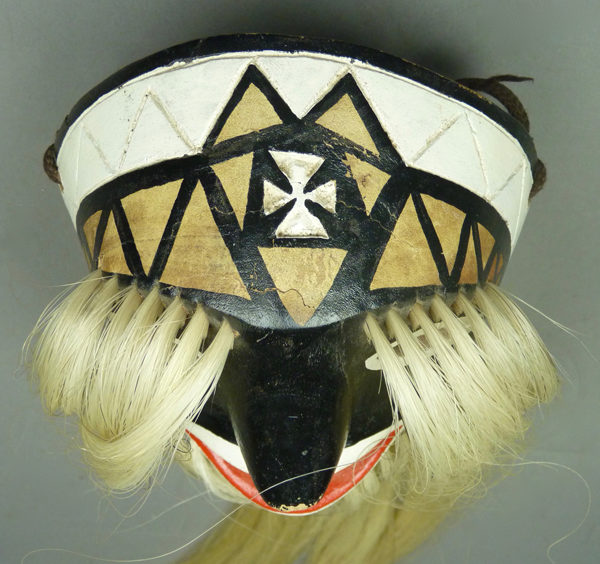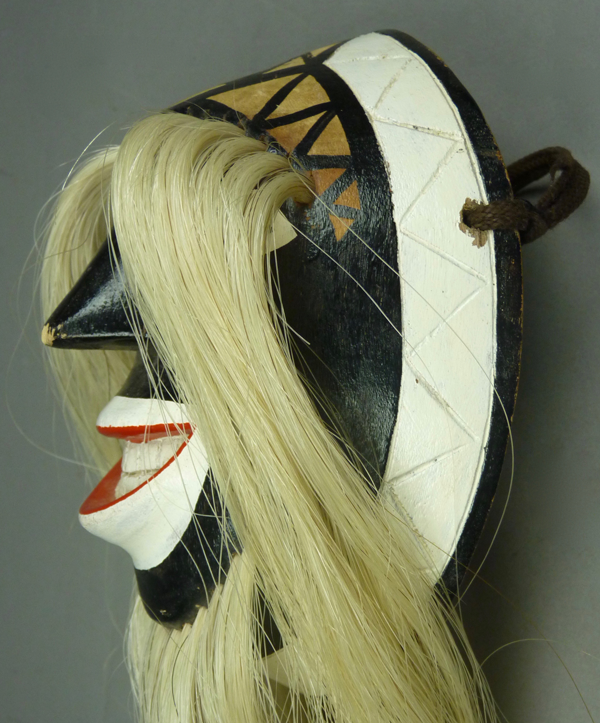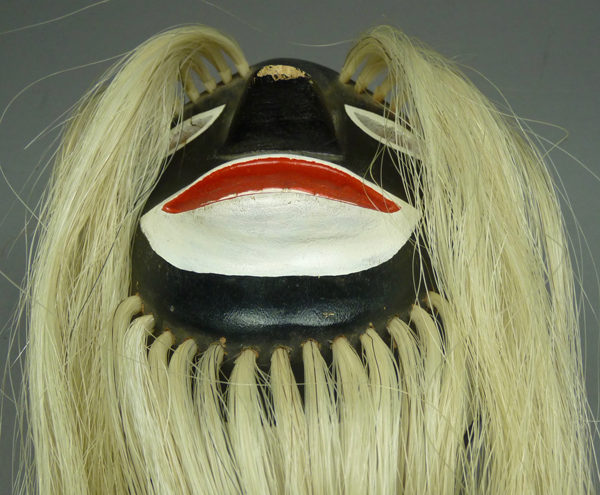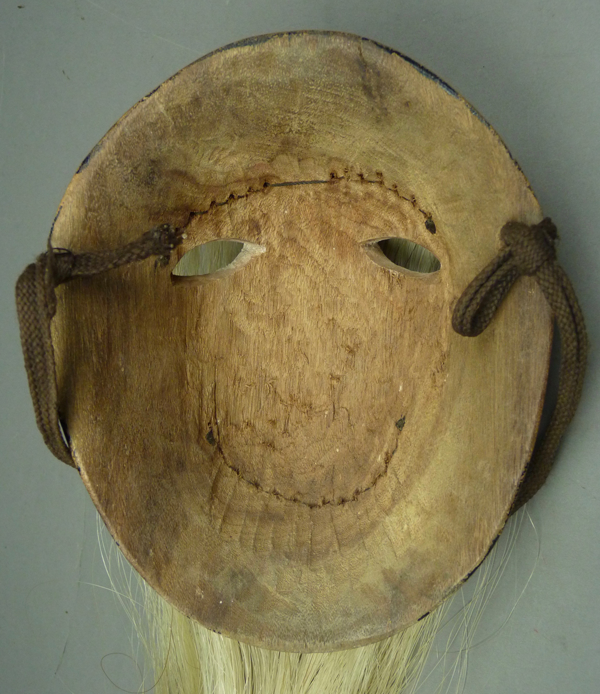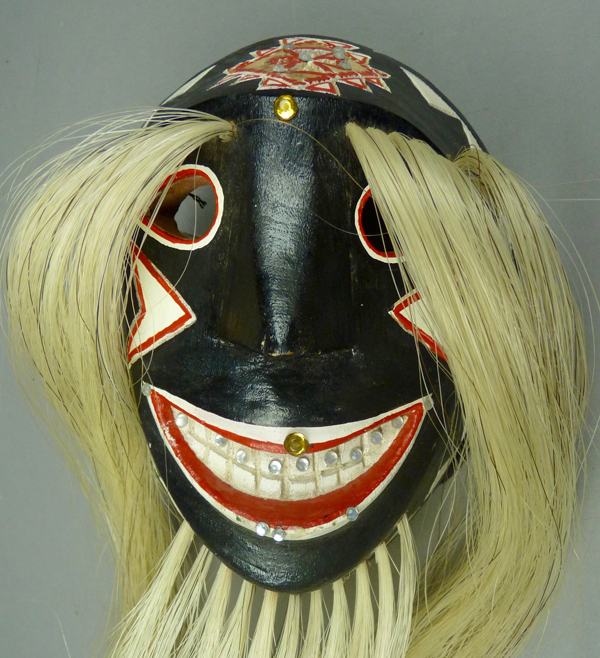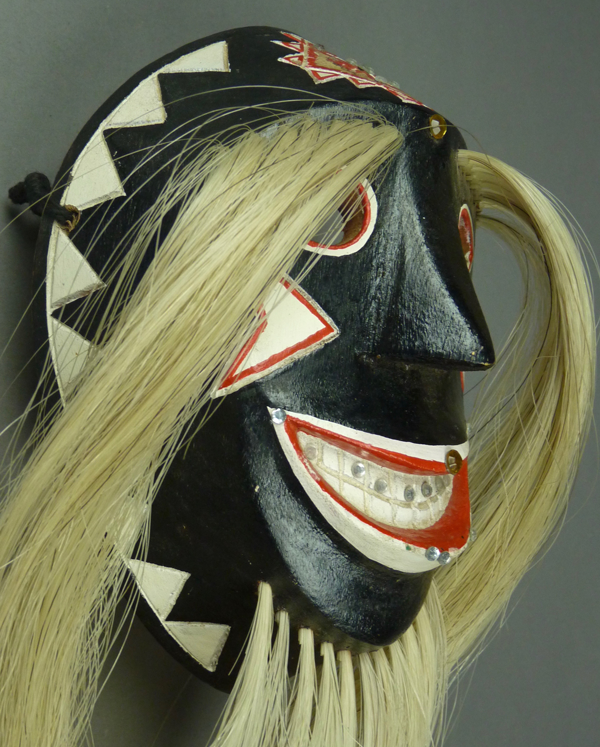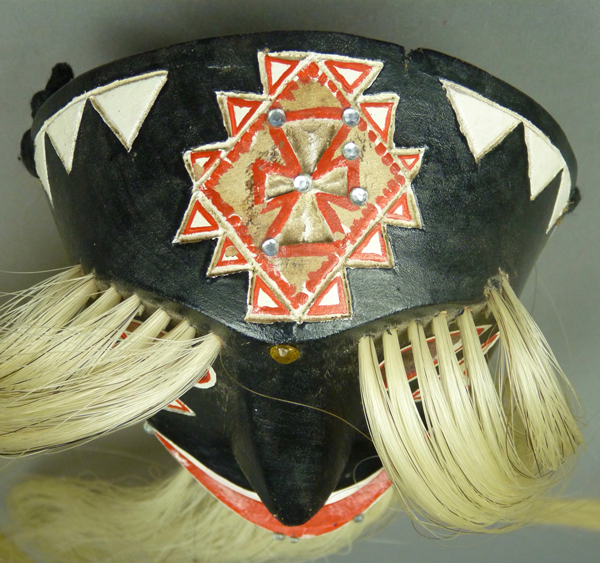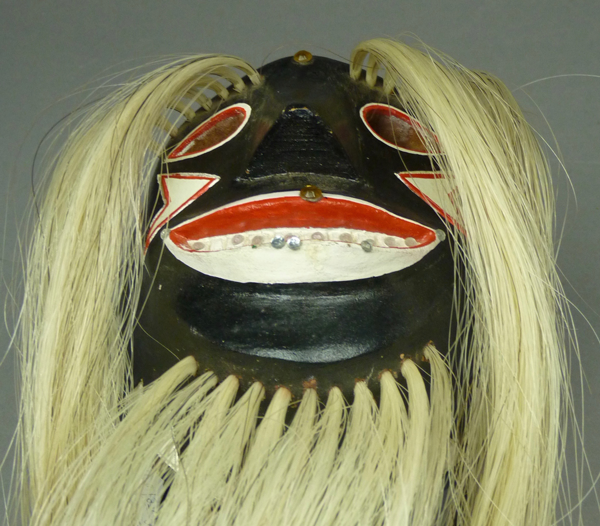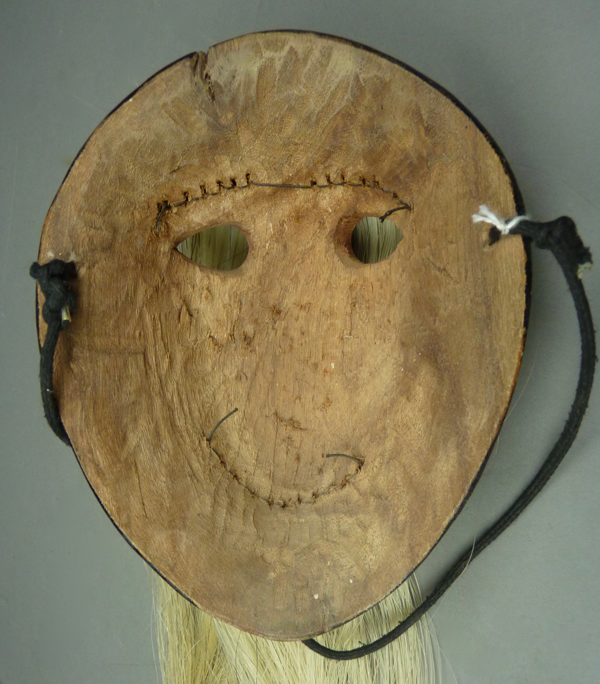Last week I had introduced you to Refugio Hipólito Ruiz Quintero, of La Bocana, Sonora, whose nickname is Cuco. Today we will examine two of his masks that I purchased in January, 2012, after they were danced for several years in Rio Mayo fiestas. Like three of last week’s masks, these are carved in a traditional design that reflects the work of an earlier generation of Rio Mayo carvers.
This mask was carved by Cuco in 2008. It was danced for 2½ years by Joaquin “Chano” Valenzuela Encinas from Chapote Chucari, Sonora, who was 27 years old when he sold the mask to an agent for Tom Kolaz. Joaquin’s father-in-law is Alfredo Lopez, also a Pascola. Cuco stated that the design of the mask represents la bandara de Jesús, “Christ’s Flag,”
Again we see a Rio Mayo mask that has been fitted with the long hair and brows found in Mayo areas of Sinaloa.
The tip of the nose was scuffed from rough use or neglect, probably in the context of ritual drinking by the dancers.
I wish I understood just which part of this design represents Christ’s Flag. The gold triangles remind me of the frequency of snake imagery on these masks.
The white rim design extends around the chin of the mask.
This mask is 7 inches tall, 5¼ inches wide, and 3¼ inches deep.
The back of this mask is moderately stained from use. The hair bundles were sewn in place.
The second mask was also carved by Cuco in 2008. It was then danced by a Pascola named Aurelio, from Guayparin Viejo, Sonora. Cuco traded Aurelio a new mask for this one, apparently after it was used for about a year or so.
The dancer decorated this mask with plastic jewels and sequins.
The hair bundles have been very carefully installed on this mask.
The forehead cross illustrates Cuco’s ability to create elaborate decorative elements on the face of a mask with a penknife. The arms of the cross are recessed, while all of the other elements have been outlined by inscribed lines. Tom Kolaz was told that Cuco is sometimes asked to augment the original design of another carver’s mask by the addition of such designs.
The chevrons on the cheeks are very traditional for Rio Mayo masks.
The photo doesn’t show this clearly, but on this mask the rim design does not continue around the chin.
This mask is 7 inches tall, 5¼ inches wide, and 3 inches deep, nearly identical to the other.
The staining from use around the rim of the bask is readily apparent.
Next week we will shift from Cuco’s masks to those of others carvers in his peer group.
Bryan Stevens

